Protecting Endangered 'Scott Riffle' Beetles - An Interview with Jordan Hofmeier
(Updated October 2021)
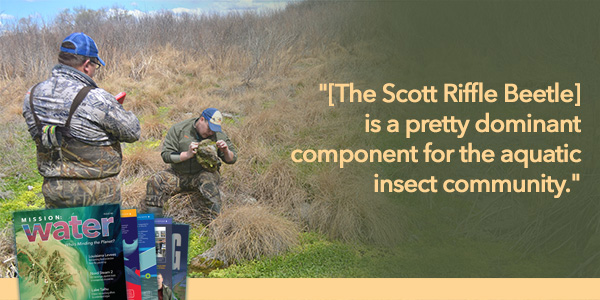
Jordan Hofmeier closely examines the habitat of the Scott Riffle Beetle
About Kansas Department of Wildlife, Parks & Tourism (KDWPT)
The KDWPT is an organization that regulates and governs outdoor recreation and the fish and wildlife resources in the state of Kansas. The department employs approximately 460 total employees across its numerous divisions.
Jordan’s Role: Aquatic Ecologist, Fisheries & Wildlife Division
Alma Mater: Fort Hays State University, M.S. Fisheries Biology, B.S. Biology
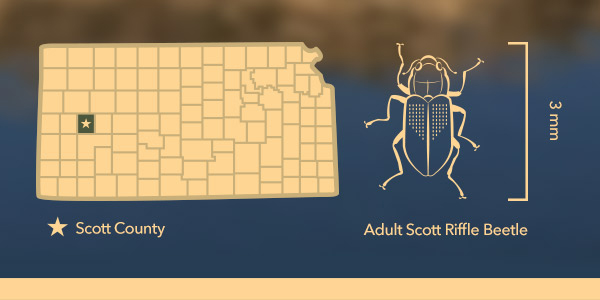
Scott Riffle Beetle (Optioservus phaeus)
Status: Endangered
Species Class: Invertebrates
Recovery Plan: Yes
Both the adult and larval stages of this small (3 mm) black beetle are aquatic. The preferred habitat is the surface of stones of well-oxygenated flowing water.
Source: KDWPT, Scott Optioservus Riffle Beetle Overview
Q: Thanks for joining us, Jordan. Can you tell us about yourself and the work you do?
Hofmeier: Sure thing! My name is Jordan Hofmeier. I work with the Kansas Department of Wildlife, Parks & Tourism as an aquatic ecologist, and my primary job responsibilities are to review development projects for potential impacts to wildlife habitat and to protect endangered species through various conservation efforts.
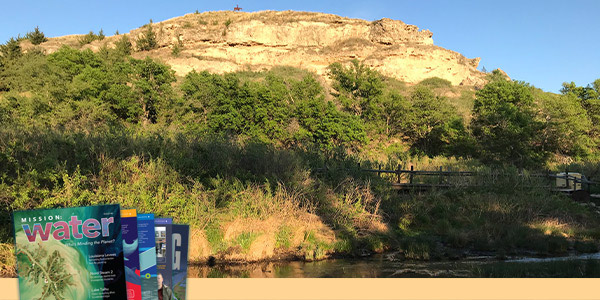
Q: Can you speak to the importance of protecting endangered species, specifically the Scott Riffle Beetle?
Hofmeier: Our conservation efforts around the Scott Riffle Beetle (Optioservus phaeus) are important for a couple of reasons.
This is one of the only nongame species endemic to Kansas, meaning that it only occurs here, at least as far as we know. It’s an important part of our state's biodiversity that we want to maintain.
Two, it is listed as an endangered species under our state Nongame and Endangered Species Conservation Act, so by law it must be protected. It's also been petitioned to be federally listed so it's important to a lot of people in our state.
Q: Does the beetle itself provide any ecological benefits?
Hofmeier: The Scott Riffle Beetle is limited to the natural springs and spring-fed streams in Historic Lake Scott State Park. So, given its very limited geographic range, some may perceive its ecological benefits as minimal. But for the springs it inhabits, it’s a pretty dominant component for the aquatic insect community. It has substantial interaction with the periphyton that grows on the rocks, and also provides food for other insects and fish in the local ecosystem.
Q: How many beetles remain in Lake Scott State Park today and what types of conditions are threatening their survival?
Hofmeier: There are probably less than 10,000 individual beetles in the area, but that's a pretty big shot in the dark. It’s a challenge to determine the exact number and we rely on sampling to provide estimates.
We’re currently trying to better understand the conditions that impact the population. One of our biggest concerns is the health of the overall Ogallala Aquifer that feeds the spring the beetles live in. We want to monitor the discharge from the spring and groundwater levels to see if there is any correlation with changes in the beetle population.
Overall, I see the depletion of the aquifer as the biggest threat. This species is so isolated, that even very small environmental events could have a substantial impact on its survival.
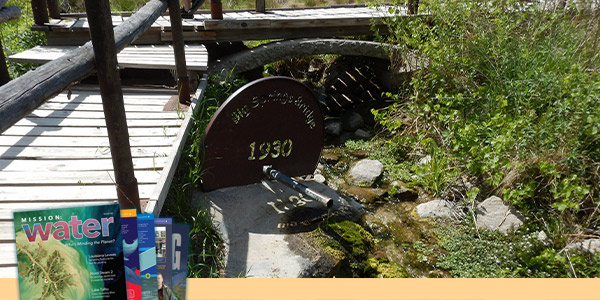
The KDWPT performs regular habitat assessments to keep a keen eye on the endangered beetle species.
Q: Do you have an early hypothesis as to what is driving the aquifer depletion?
Hofmeier: Definitely…irrigation. Western Kansas is primarily cropland and the vast majority of those crops are irrigated in some form or another.
There are ongoing efforts in the state to implement more efficient irrigation systems and to plant less “thirsty” crops until we can slow down the depletion rate, but we’ve got a long way to go to find the equilibrium.

Q: What would you say to critics who don't see value in protecting this endangered species?
Hofmeier: Every species we have is important for some reason. An ecosystem is like a building. If you pull some nails or screws out of a building, it may not collapse but the more and more damage we do to the structure−or in this case an ecosystem−the more we affect its integrity. And if you do enough damage over time, you can cause chain reactions that destroy basic ecosystem functions.
While the Scott Riffle Beetle does feed other organisms in the spring, one of its other primary roles in the ecosystem is to serve as an indicator of water quality for the area. Their survival depends on regular spring flow from the aquifer, with high dissolved oxygen and low contaminant levels.
So, it serves as kind of a canary in the coal mine. If we were to see abrupt decline in population numbers, we’d have an early indication for groundwater contamination or that aquifer levels have reached critical levels.
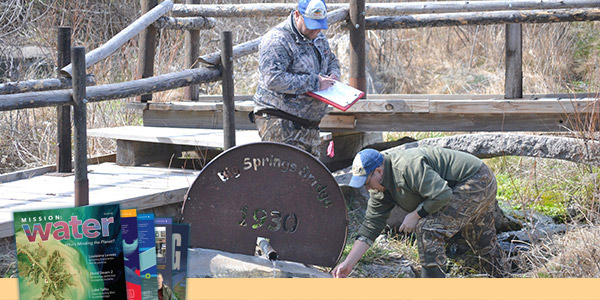
"[The Beetle] serves as an indicator of water quality for the area."
Q: Are there specific water quality levels that help the beetles thrive?
Hofmeier: We don't have a great baseline on those levels right now, and that's why we’re incorporating a water quality monitoring component into our work…to better understand these environmental conditions. If we can get a better handle on the exact parameters allowing the beetle to persist and thrive, then we can set baseline requirements for the spring and work toward maintaining those conditions.
We lack quite a bit of life history information on this species and these data could be hugely beneficial for making inferences into timing of larva emergence and pupation. An extensive water quality record will go a long ways for refining our understanding of the beetle's life cycle.
We know that at least in other aquatic beetles, dissolved oxygen is an important parameter to monitor for respiration. We’re also monitoring nitrates for potential groundwater contamination and water levels in the spring to account for any groundwater depletion.
We’re also tracking temperature as well since it has a strong impact on dissolved oxygen, as well as a number of other parameters like specific conductance, pH, and others that may have some impact on the population.
All of this data is collected at hourly intervals using a monitoring station in the field. With real-time data available, if we were to notice a sharp change in the habitat conditions, we could take action to protect the beetle as well. We’re working on setting up automated alerts to inform us of these types of emergency water quality levels, but first we need to establish the baseline numbers to know
what’s normal.
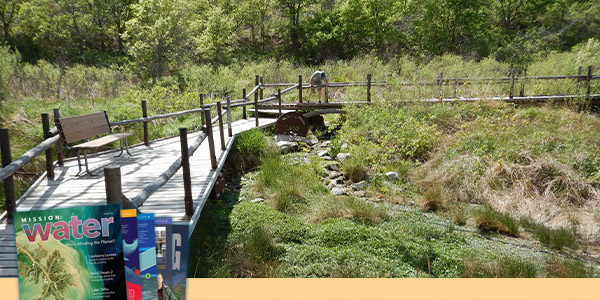
Q: And what would be a real life example of actions your team would take based off of those alerts, let's say for dissolved oxygen?
Hofmeier: If we did receive an alert from the monitoring station, we would be able to remove some beetles from the springs and store them in aquariums for short-term storage. We could then investigate the changes in water quality or level and return them to the environment when it was safe to do so. If there were a longer-term disturbance in the ecosystem, it would be much harder to manage.
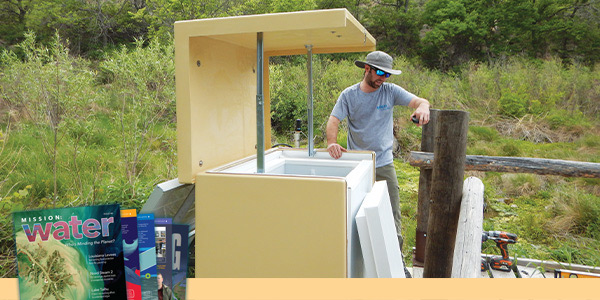
All Day, Every Day.
The Kansas Department of Wildlife, Parks & Tourism installed a sophisticated monitoring station in Historic Lake Scott State Park to help protect the Scott Riffle Beetle.
The integrated system from YSI incorporates an EXO Sonde outfitted with a number of water quality sensors that keep tabs on the endangered species’ habitat. Water is pumped from the springs into a flow cell where measurements are taken, then pumped back to the natural environment.
The station is self-contained and powered by a combination of solar panels and large batteries. It is designed to operate 24/7, 365 days a year – even during harsh Kansas winters where ambient temperatures drop well below freezing.
“The beetles don’t head out for winter,” Hofmeier joked. “We had to take a holistic approach that would work even in the harshest weather conditions in Western Kansas.”
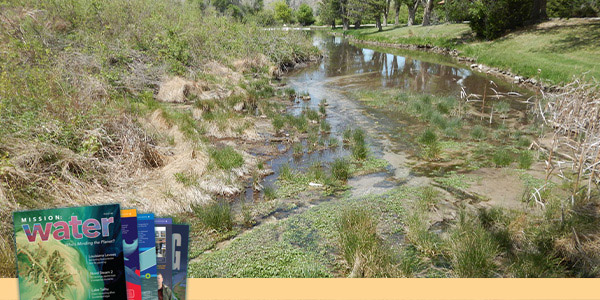
Conservation efforts from agencies like the KDWPT help to protect endangered species and maintain biodiversity.
Q: Could your work with the Scott Riffle Beetle be replicated by other scientists to protect isolated aquatic species?
Hofmeier: Absolutely! This type of highly restricted endemism isn’t unique. The work that my team is doing could be applied to many of these situations where an endangered species is located in one specific location. If you have the equipment and the capacity to monitor water quality for an entire population, it can make a huge difference in your conservation efforts.
Our setup could work for monitoring a lot of aquatic invertebrates. There are a number of fish species, for example, that are isolated to certain springs or caves that would benefit from water quality monitoring.
The general public, at least in Kansas, is overwhelmingly in favor of conservation and protection of endangered species, so they support investments to do so.
Monitoring tools give us confidence in our conservation and management decisions, and help us do our job well.
Q: How can readers support your efforts to protect endangered species like the Scott Riffle Beetle?
Hofmeier: In Kansas we have a program called Chickadee Checkoff, where residents can donate to nongame species research, conservation and education efforts. And I think there are a number of other states that have similar programs. I’d encourage everyone to check out their local fish and wildlife agency’s website to see if they have similar programs.
Every donation gets us one step closer to reaching our goals.
Learn More:
For more on the Scott Riffle Beetle.
For more on the Chickadee Checkoff.
